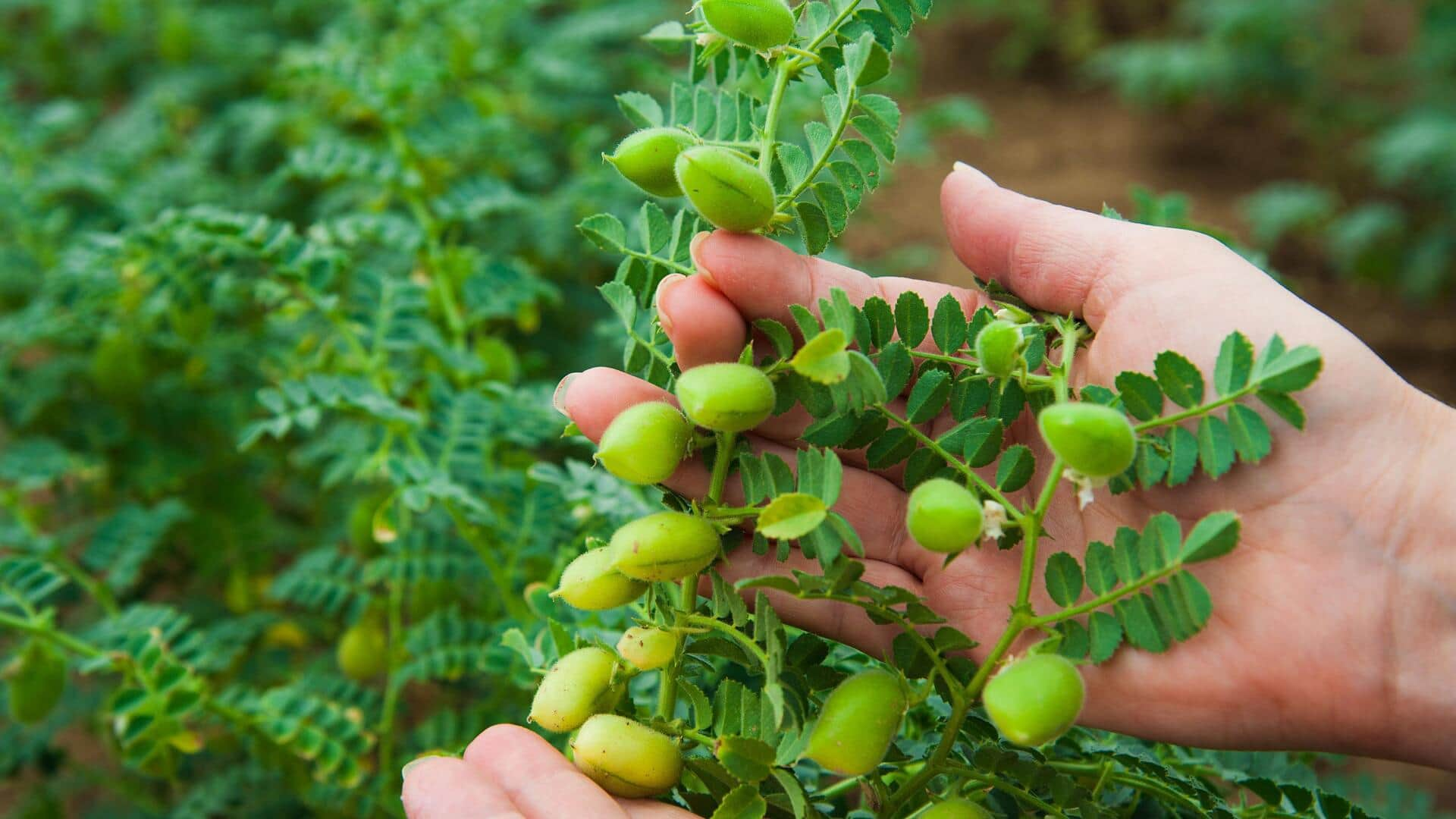
How to grow chickpeas indoors
What's the story
Growing chickpeas indoors is a fun and fulfilling project for anyone interested in growing their own nutritious legumes. Chickpeas, also known as garbanzo beans, are a great source of protein and fiber, making them a healthy choice for any meal. This article will walk you through the steps to grow chickpeas in containers right inside your home, from choosing the best seeds to harvesting your bounty.
Seed selection
Choosing the right seeds
To ensure successful indoor cultivation, it's important to choose high-quality chickpea seeds. Opt for organic seeds, as they're free from chemicals that could hinder germination. There are two main types of chickpeas: Kabuli and Desi. Kabuli chickpeas are larger and lighter in color, while Desi chickpeas are smaller with a darker color. Base your seed selection on your taste preferences and the types of dishes you intend to make.
Container setup
Preparing your containers
Chickpeas need well-draining soil and plenty of room for root growth. Select containers that are a minimum of 12 inches deep and possess drainage holes at the bottom. Fill your containers with a blend of potting soil and compost. This will create a nutrient-rich growth medium. You can further enhance soil drainage by adding perlite or vermiculite.
Sowing process
Planting your seeds
Sow the chickpea seeds one inch deep into the soil, spaced about three inches apart. If you are planting multiple rows in one container, leave about six inches of space between the rows. This will ensure good air circulation around the plants as they grow. After planting the seeds, water them gently but thoroughly.
Maintenance tips
Caring for your chickpea plants
Chickpea plants love full sun, so place your pots where they can receive a minimum of six hours of direct sunlight each day. Water regularly, but don't drown them! Let the top inch of soil dry out before watering again. Although chickpeas don't typically require additional fertilization if grown in compost-rich soil, a light application of balanced organic fertilizer can support growth during periods of rapid growth.
Harvest time
Harvesting your chickpeas
Chickpea plants usually mature in approximately 100 days post planting. However, keep a close eye on your plants as maturity times may differ based on growing conditions and the specific seed variety used. When chickpeas are ready for harvest, the pods will feel hard to the touch. You can then handpick them and let them dry before shelling out the beans inside.